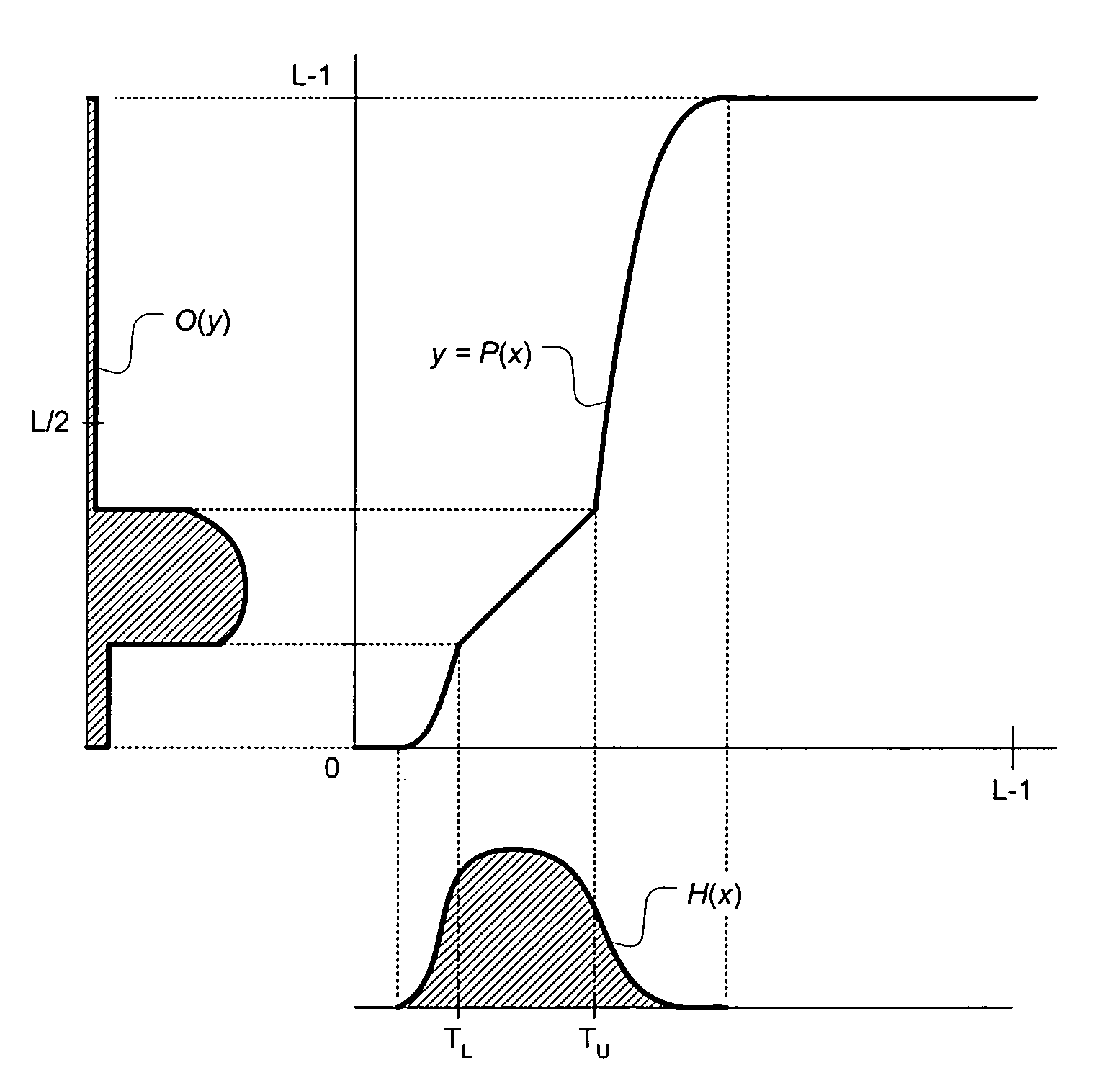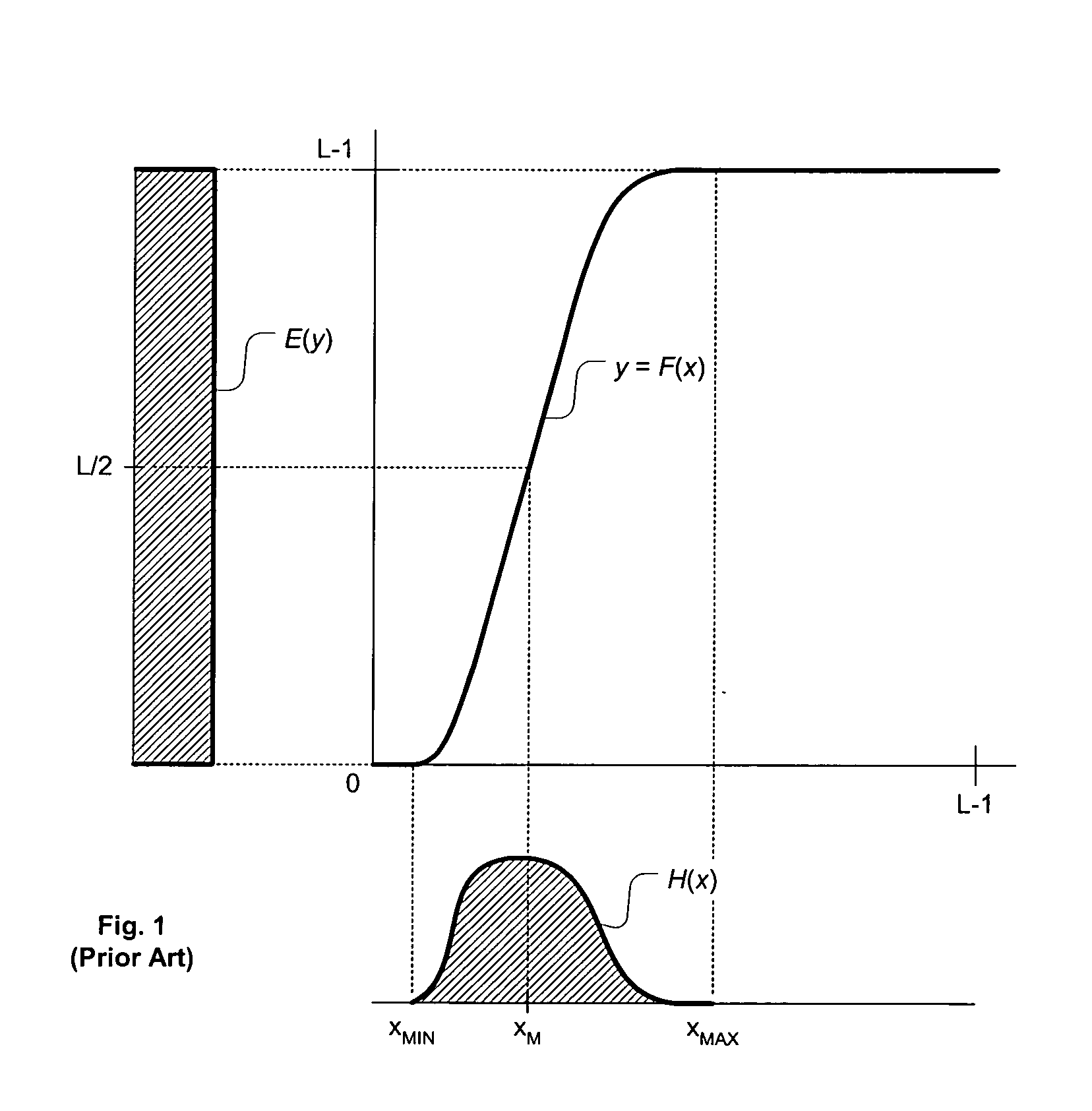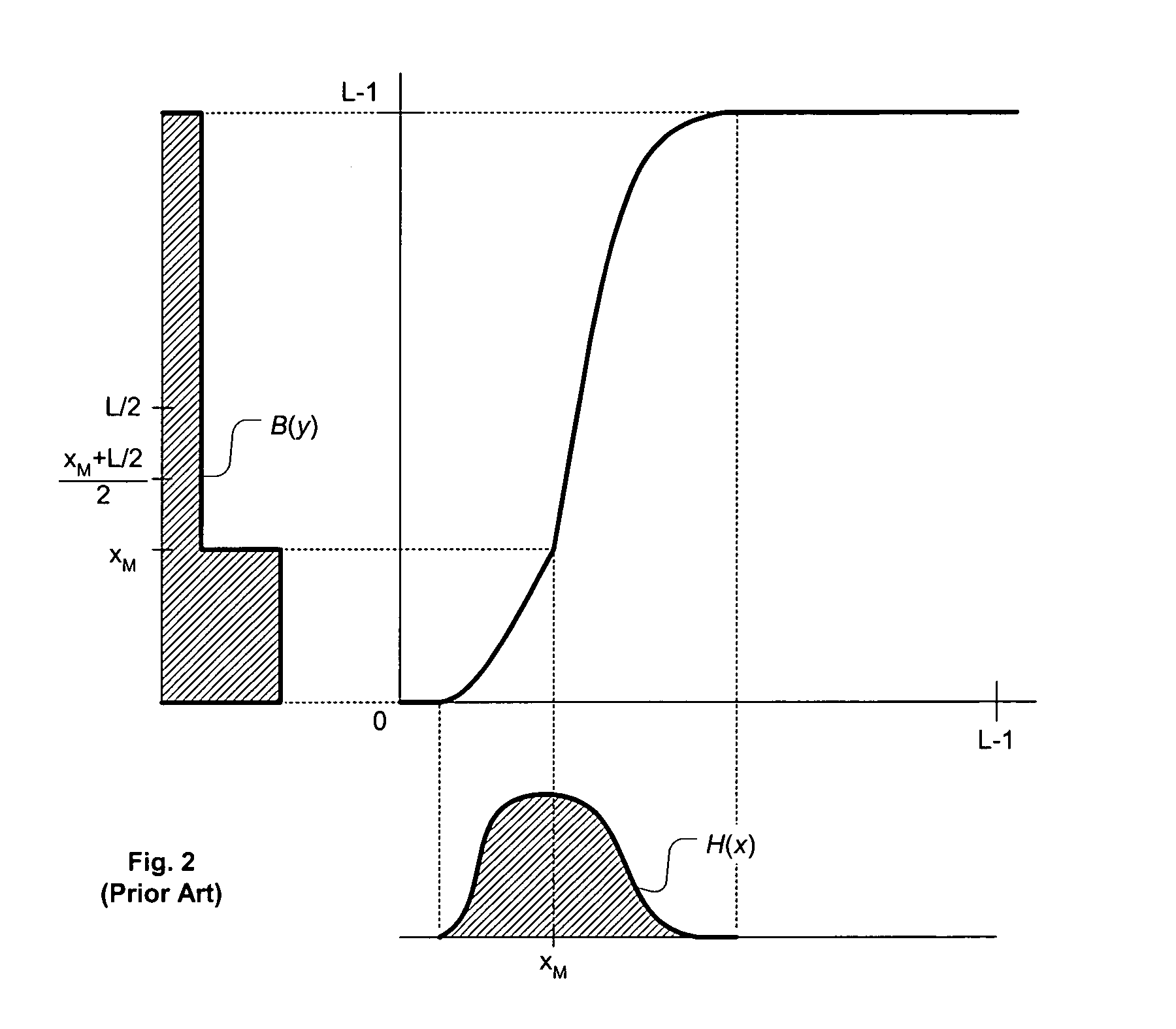Video contrast enhancement through partial histogram equalization
a video contrast and partial histogram technology, applied in image enhancement, television systems, instruments, etc., can solve the problem that the best place to perform large intensity shifts on large numbers of pixels is typically the frame-adaptive video contrast enhancement, and achieve good contrast enhancement
- Summary
- Abstract
- Description
- Claims
- Application Information
AI Technical Summary
Benefits of technology
Problems solved by technology
Method used
Image
Examples
Embodiment Construction
[0031]Several terms have been assigned particular meanings within the context of this disclosure. As used herein, the terms “above” and “below” a threshold are used with the recognition that, with integer comparisons, something is often defined to be “above” (or alternately, “below”) a threshold if it equals that threshold. A “contrast-enhancing function” redistributes a set of pixel intensities in a non-linear manner that increases the average contrast between neighboring intensities. A “function” can be a closed form equation, but a discrete function can also be implemented using, e.g., a lookup table. An “adaptive” function changes as scene content changes, although it need not change at every frame, and the response to scene content changes can be delayed or filtered. On the other hand, a “scene-stable” function remains substantially constant for the duration of a video scene (or longer); if such a function does change substantially, it does so at scene transitions or very gradu...
PUM
 Login to View More
Login to View More Abstract
Description
Claims
Application Information
 Login to View More
Login to View More - R&D
- Intellectual Property
- Life Sciences
- Materials
- Tech Scout
- Unparalleled Data Quality
- Higher Quality Content
- 60% Fewer Hallucinations
Browse by: Latest US Patents, China's latest patents, Technical Efficacy Thesaurus, Application Domain, Technology Topic, Popular Technical Reports.
© 2025 PatSnap. All rights reserved.Legal|Privacy policy|Modern Slavery Act Transparency Statement|Sitemap|About US| Contact US: help@patsnap.com



